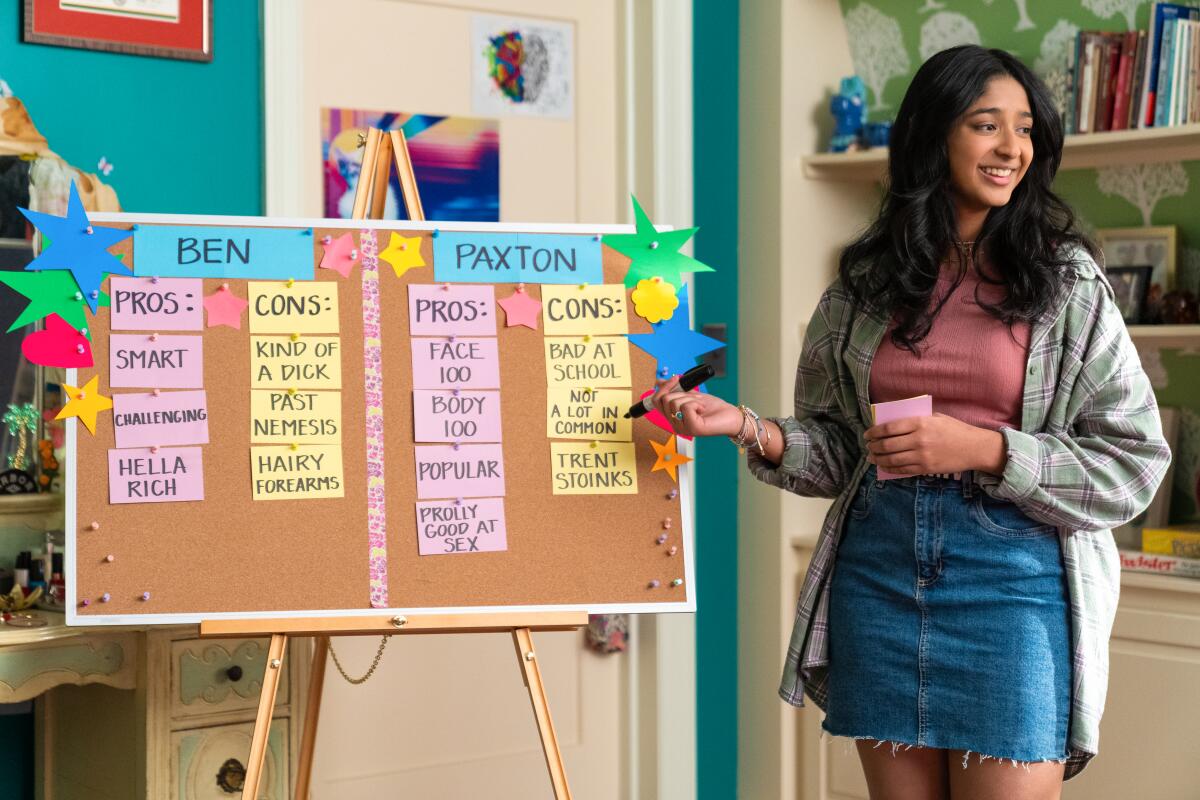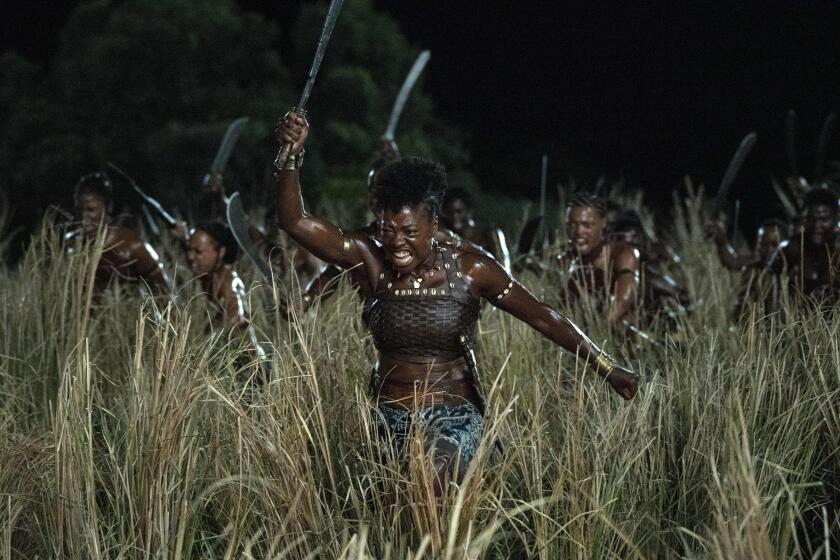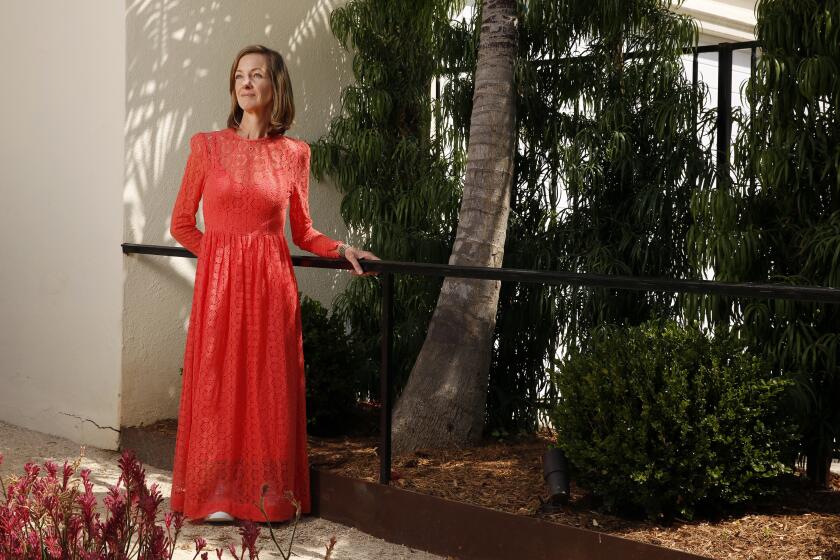New Netflix data shows diversity gains, but does not factor recent job cuts

Netflix has increasingly improved its diversity in many areas in front of and behind the camera, according to a report by USC Annenberg Inclusion Initiative released on Thursday.
The company outpaced the rest of the film and TV industry, with 65% of U.S. original scripted movies featuring girls or women as leads or co-leads in 2021, compared with 41% in the industry’s top 100 films, according to Stacy Smith, founder of the Annenberg Inclusion Initiative and one of the report’s authors. Also noted in the report — nearly 57% of Netflix U.S. original scripted series featured girls or women as leads or co-leads, up from 50.6% in 2018.
“Netflix is clearly leading the rest of the companies that are distributing [and] buying content,” Smith said in an interview. “They have a proclivity towards inclusive storytelling and these numbers illuminate that really powerfully.”
The report examined gender, race, sexual identity and disability inclusion in U.S. original scripted series and films from 2018 to 2021. It was part of Netflix’s commitment to measuring itself in these categories. Netflix said it commissioned the first report in 2019. The results were released in 2021, after the social justice movement sparked by the murder of George Floyd. Netflix also has a $100 million Fund for Creative Equity that goes toward training and support to help directors, writers, producers and other crew members from underrepresented communities. According to the streamer, more than $29 million of the fund has been allocated with more than 4,500 creatives benefiting from the programs, including 395 people working on Netflix productions.
“We’re encouraged by this newest round of results and the impact we’re seeing through the first two years of the Fund for Creative Equity,” wrote Chief Content Officer Bela Bajaria in a blog post. “But we know that driving real change, not only at Netflix, but industry-wide, means continuing to think about whose voices are still missing and discovering the next generation of storytellers.”
Netflix on Thursday also announced the expansion of training programs with Shondaland, including one that gives experience to participants on the set of murder mystery series “The Residence.”
“The results from our inaugural pipeline programs clearly show that investing in training and opening up access to our productions is creating impact and resulting in meaningful career opportunities for underrepresented talent,” Bajaria said in a statement.
Representation by people of color as movie leads and film writers has slid back to 2019 levels, according to UCLA’s Hollywood Diversity Report.
Some industry observers have expressed concerns about whether the strides and commitments to increase the visibility of underrepresented communities is fading away, as streaming services cut staffs, trim budgets and cancel programs to increase their profitability. Last year’s layoffs at Netflix and program cancellations like Latino-led series like “Gentefied” were not reflected in the report.
Another aspect not explored in the report, which was part of a partnership between USC and Netflix, was the size of budgets given to underrepresented communities at Netflix. A recent UCLA diversity report that examined Hollywood films noted that many directors of color tended to be be given smaller budgets.
Based on Netflix’s past performance, Smith said there’s an indication that the company will continue to make strides in inclusion.
“A very simple truism of research is previous behavior is the best predictor for future performance,” Smith said. “They’re going to keep doing this and they’re going to keep doing it better.”
The company employed a higher percentage of female directors and directors of color than the industry’s top-grossing film directors, according to the report. Women represented 27% of Netflix’s directors on U.S. scripted films in 2021, compared with 12.7% of the top-grossing film directors from major film studios. About 40% of the main cast in Netflix U.S. scripted series and films were people of color.
But the company lost some percentage points in underrepresented directors for 2021, dropping to 22.4% of Netflix U.S. scripted films, compared with 30% in 2020, according to the report.
Other areas requiring improvement include increasing representation of Latinx creatives, which represented 4.5% of Netflix’s directors on U.S. scripted films and 2.7% of its series directors in 2021.
Representation of people with disabilities has slid back from 2019 in lead roles in Netflix movies. In 2021, 7.7% of Netflix films had a lead or co-lead with a disability, compared with 15.8% in 2019.
“I think this area is a huge growth opportunity for us and for the industry overall,” Bajaria said, adding that Netflix’s partnerships with groups like RespectAbility and Easterseals has helped connect creators with more knowledge about people with disabilities.
A group of creatives and executives with disabilities in Hollywood is pushing employers to start including accessibility as part of inclusion initiatives.
The company also worked with RespectAbility through a program that helps educate and train disabled writers, animators and creative executives interested in kids programming. The fund covers underrepresented groups globally, which has helped nine directors land work on Netflix productions in the U.S. and Canada through the Netflix Series Director Development Program, train filmmakers in India and fund a fellowship program for aspiring producers in the Netherlands, among other efforts.
“The Netflix Series Directors Development Program helped me pivot my career — the team looked beyond my career as an actor, and saw the potential in me to grow as an artist,” said Paula Garces, one of the program’s participants in a report about the fund. “The program gave us access to major talent and a front-row seat to the inner workings of directing.”
But getting into some of the programs has become incredibly competitive. More than 500 applicants applied for five positions with MakeMake Entertainment’s Residencies program, which received money from the Netflix Fund for Creative Equity. “We can’t get the experience if we’re not invited to the table,” said a rejected applicant, who declined to be named for fear of retaliation.
“We were shocked at the number of applicants and had ongoing conversations with a number of finalists,” said Jennifer Sofio Hall, managing director at MakeMake Entertainment. “We were not able to provide feedback to all of the applicants. The number of applicants underlines the desire for more of these kinds of programs within the industry.”
More to Read
Inside the business of entertainment
The Wide Shot brings you news, analysis and insights on everything from streaming wars to production — and what it all means for the future.
You may occasionally receive promotional content from the Los Angeles Times.













